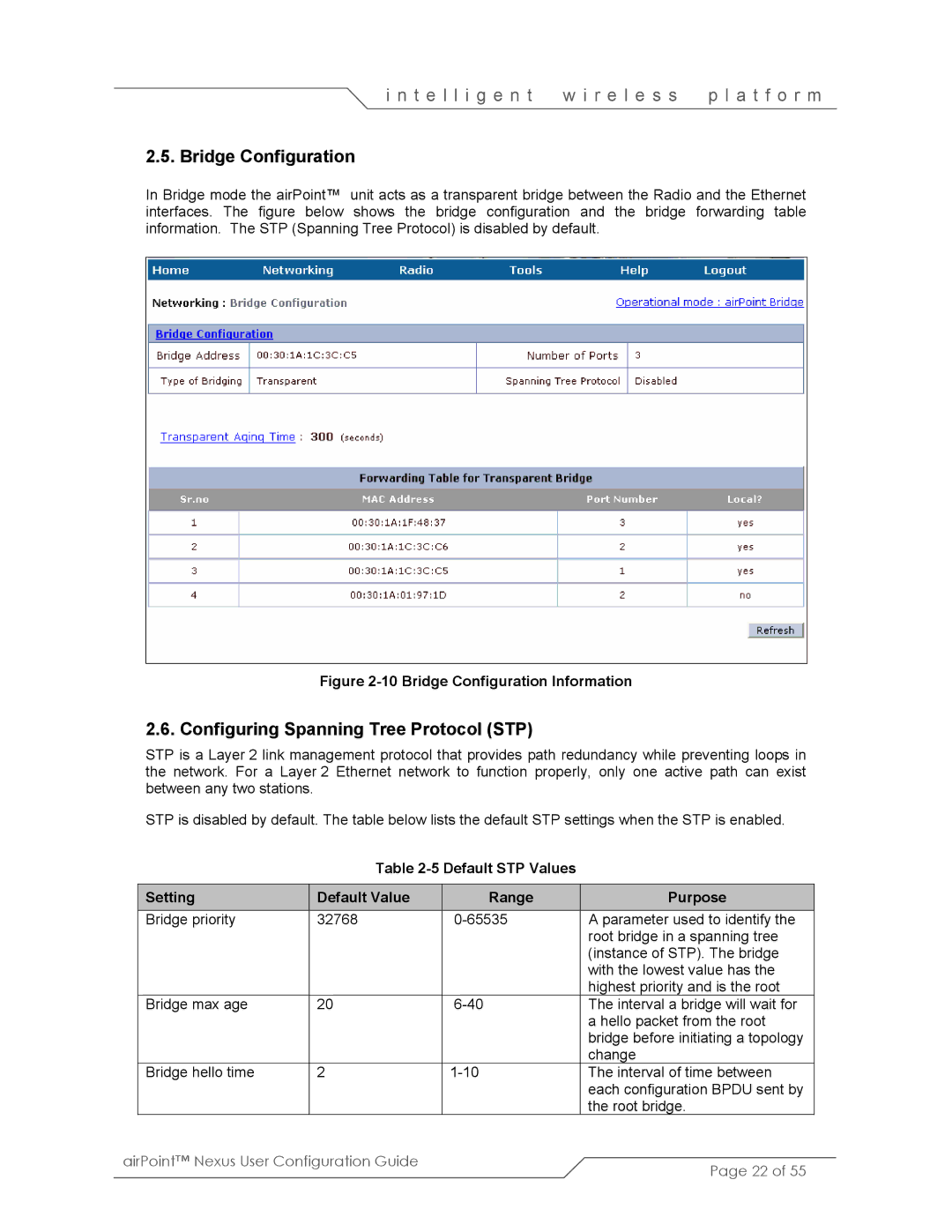
i n t e l l i g e n t | w i r e l e s s | p l a t f o r m |
2.5. Bridge Configuration
In Bridge mode the airPoint™ unit acts as a transparent bridge between the Radio and the Ethernet interfaces. The figure below shows the bridge configuration and the bridge forwarding table information. The STP (Spanning Tree Protocol) is disabled by default.
Figure 2-10 Bridge Configuration Information
2.6. Configuring Spanning Tree Protocol (STP)
STP is a Layer 2 link management protocol that provides path redundancy while preventing loops in the network. For a Layer 2 Ethernet network to function properly, only one active path can exist between any two stations.
STP is disabled by default. The table below lists the default STP settings when the STP is enabled.
Table 2-5 Default STP Values
| Setting | Default Value | Range |
| Purpose |
| Bridge priority | 32768 |
| A parameter used to identify the | |
|
|
|
|
| root bridge in a spanning tree |
|
|
|
|
| (instance of STP). The bridge |
|
|
|
|
| with the lowest value has the |
|
|
|
|
| highest priority and is the root |
| Bridge max age | 20 |
| The interval a bridge will wait for | |
|
|
|
|
| a hello packet from the root |
|
|
|
|
| bridge before initiating a topology |
|
|
|
|
| change |
| Bridge hello time | 2 | The interval of time between | ||
|
|
|
|
| each configuration BPDU sent by |
|
|
|
|
| the root bridge. |
airPoint™ Nexus User Configuration Guide |
|
| Page 22 of 55 | ||
|
|
|
|
| |
